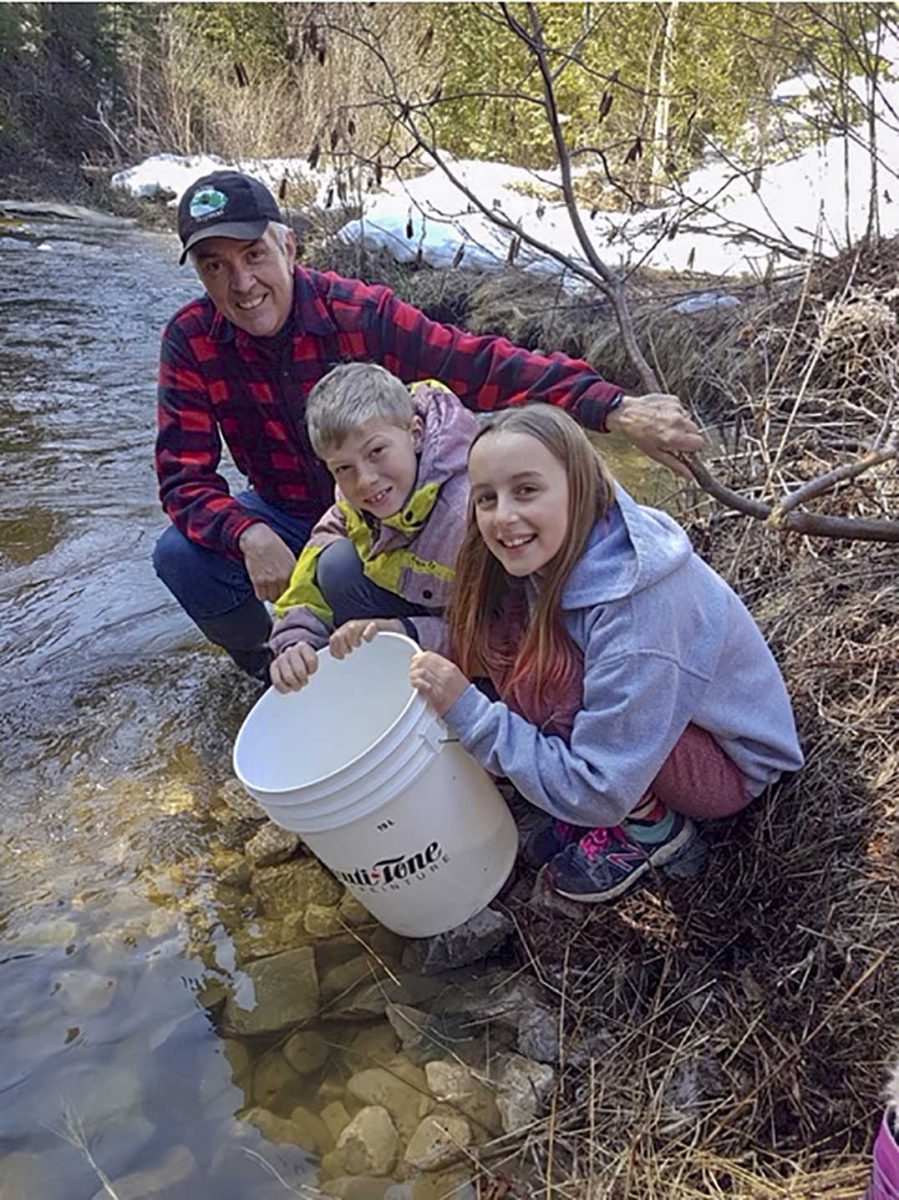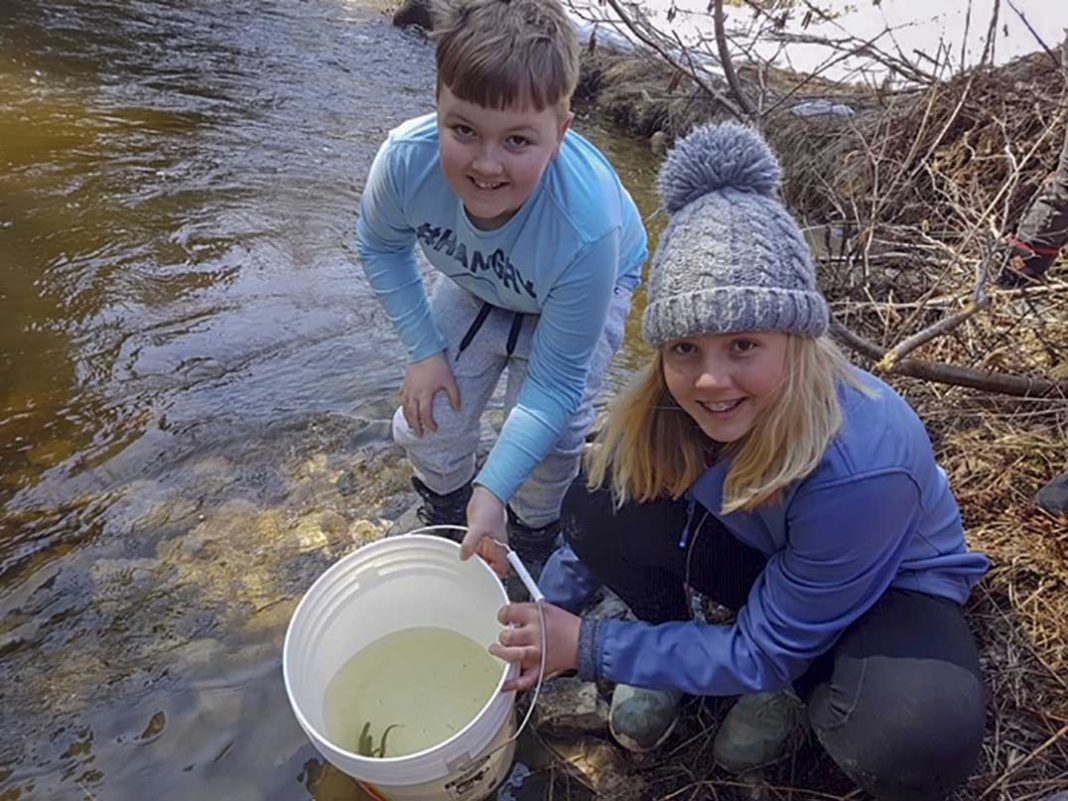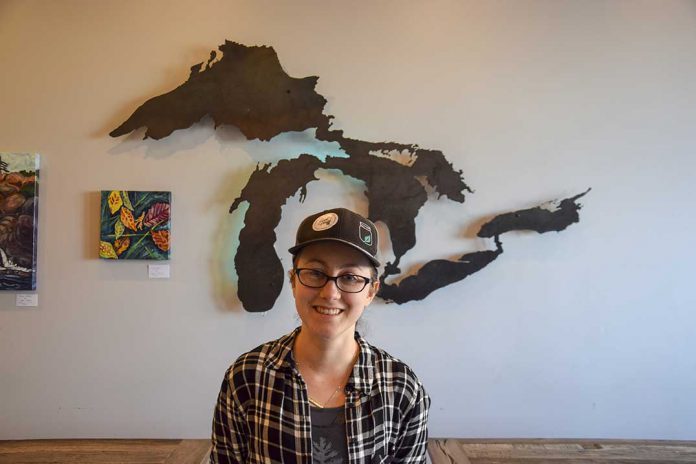MANITOULIN – A representative of the Gore Bay District Fish and Game Club (GBFGC) is very pleased with how the micro-hatchery fish raising project—that the club has helped establish and provides fish eggs for—has developed in Central Manitoulin Public School (CMPS) in Mindemoya and Charles C. McLean Public School in Gore Bay.
“It’s going wonderfully at both schools,” said Ches Witty of the GBFGC, last week. “I’m really happy with the way things are going at both schools.”
Last week, CMPS students released their fish. Ian Anderson, a member of the GBFGC, reported that 96 Chinook salmon were released from 200 eggs that the school started to incubate within its building last October.
Andre Leblanc was the lead teacher involved, with the fish eggs supplied by the GBFGC and the micro-hatchery as well.
It was reported that the fish were three to four inches in length, released on Wednesday of last week in the stream that flows into West Bay in M’Chigeeng First Nation.
A class from M’Chigeeng’s Lakeview Elementary School assisted in the release, with an elder present who carried out a brief ceremony prior to the release.
The project was a joint effort between the Ministry of Natural Resources and Forestry (MNRF) out of Sudbury, MNRF biologist Wayne Selinger, and with fish food donated by Blue Jay Creek Fish Hatchery’s Dale Jordison.
“Involving schoolkids in hands-on rearing of fish for future generations is key to keeping our natural resources healthy,” said Mr. Anderson.
CMPS teacher Mr. Leblanc led the project in the school, which had started last fall. Up until their release last week, a very large fish tank was situated in a hallway at the school and filled with young salmon. In March, a couple of students were more than eager to tell the Recorder exactly what was going on.
Grade 5 student Allison Hallett of Mindemoya explained that the four students present were changing the water in the tank and Jordan Graham, a Grade 7 student, was quick to say that she and Alysha Lee, who is in Grade 6, were there just to help move the big water container outside for dumping.
Allison noted that she and Grade 4 student Samantha McKenzie were raising the salmon as part of a project that had started October 4.

“We started with eyed eggs,” Allison said, “and they were successfully fertilized after a few weeks.” The females scoop out a hollow (called a redd) in the gravel of a streambed and deposit between 2,500 and 3,000 eggs.
Allison then went on to talk of the life cycle of the salmon, beginning with the alevin ones. “They hatch in the spring,” she said. Indeed, notes on the board behind the tank stated that the alevin stay in gravel for four to six weeks for protection from predators and have yolk sacs (informally called ‘lunch bags’) and they feast on that for a month.
“Then is the smolt fish,” Allison went on to say, “and they change in spring and head downstream and out to the lake. They are a bright silver.”
The next stage is the adult Chinook salmon, living in the lake and maturing and strengthening. “That is so they can make the trip back up the river where they started,” Allison added.
Adult salmon that return to spawn after one year are known as multi sea winter salmon. Once the salmon start their journeys from their feeding ground, they do not feed, even when they are back in their rivers, reads the notes for the life cycle of the salmon. Chinook salmon that enter the ocean off British Columbia live there for most of their lives—as long as eight years. Wild BC Salmon says it is a mystery how the salmon can return to the stream in which they were born, but it is thought they rely on a combination of genetic coding, celestial navigation, electromagnetic current and a strong sense of smell.
Another stage the students learned about is called ‘kelt,’ the name for the salmon after they have spawned; that is, released their eggs. The females appear particularly thin and the males are tired from fighting each other to make sure they spawn with the best females. About five percent of kelt salmon are able to make it back out to sea where they began to feed and grow strong again.
The Chinook salmon that the CMPS students are raising can be found in all the Great Lakes.
Mr. Witty said at C.C. McLean, “there are some really healthy looking fish. There has been no mortality or very low mortality. Richard Panton has been overseeing the project with the students and kids and teachers, and is doing a super job.” He added the fish will be released soon.





